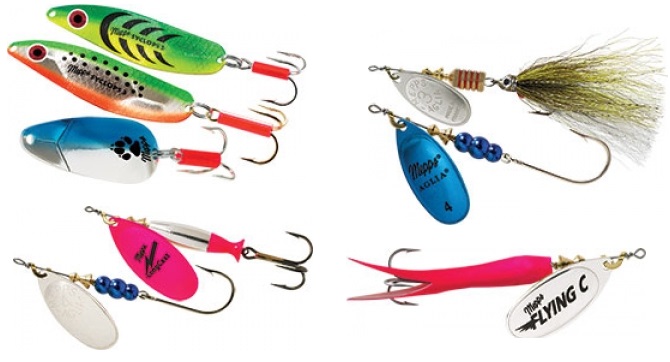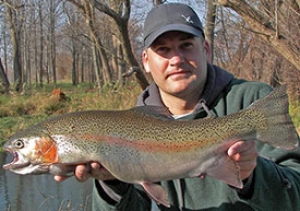Every year in the Great Lakes and Pacific Northwest a strange metamorphosis takes place. Anglers, once satisfied with a pailful of tasty panfish, become obsessed with “salmon fever.”
 The beauty of this fishing is that it’s available to almost anyone. Depending on the time of year, huge kings and coho can be caught not only trolling, but off piers, surfcasting, wading a river, or even stream fishing from shore.
The beauty of this fishing is that it’s available to almost anyone. Depending on the time of year, huge kings and coho can be caught not only trolling, but off piers, surfcasting, wading a river, or even stream fishing from shore.
Coho and chinook salmon are anadromous fish. This means they are born in a river or stream, migrate to the ocean or Great Lakes and return to their birth place to spawn. In the Pacific Northwest, these spawning runs occur in the spring, summer and fall. Great Lakes salmon only spawn in the fall.
The chinook (king) salmon is the largest of all salmon. Some Alaska “giant” chinook reach weights in excess of 120 pounds. However, they will average about 20 pounds, and any fish over 30 pounds is a trophy. Coho salmon are smaller, but are fierce fighters and can become very acrobatic when hooked. Like the coho and chinook, the steelhead is also migratory. It is really nothing more than a sea-run rainbow trout or, in the Great Lakes, a Great Lake-run rainbow.
Spinner and spoon fishermen considering salmon fishing for the first time should equip themselves with a medium-heavy rod and reel combination capable of holding at least 200 yards of 15- to 20-pound test line. A rod length of 5-1/2 to 6-1/2 feet is ideal.
Lure selection for these trophy fish is critical. Because of their unique design, the Mepps Syclops, Syclops Lite and Little Wolf spoons provide maximum flash and movement at any trolling or retrieve speed. These colorful spoons can be highlined, attached to a diving planer, downrigged or fished on a planer board. And, they track evenly behind a downrigger providing tangle-free fishing. They can also be cast from a pier. In fact, they are two of the most versatile pier fishing spoons ever developed. Sandwich a couple of Syclops front to back, and you’ll cast further than ever before. Once the fish have moved upstream, the flash of these spoons will aggravate the most passive salmon into striking.
 The Mepps Trophy Series was developed specifically for the trophy trout and salmon fisherman. These high-contrast, maximum visibility lures only come in sizes #3, #4 . Their size and blade/body color contrast provide intense flash and vibration so they can easily be seen and heard by trophy trout and salmon. The Mepps LongCast also features maximum visibility while providing added casting distance. It is available in two sizes: #4 – 5/8 oz., or #5 – 7/8 oz.
The Mepps Trophy Series was developed specifically for the trophy trout and salmon fisherman. These high-contrast, maximum visibility lures only come in sizes #3, #4 . Their size and blade/body color contrast provide intense flash and vibration so they can easily be seen and heard by trophy trout and salmon. The Mepps LongCast also features maximum visibility while providing added casting distance. It is available in two sizes: #4 – 5/8 oz., or #5 – 7/8 oz.
Another Mepps spinner that’s perfect for both pier and stream fishing is the Mepps Flying C. This heavyweight spinner, like the LongCast, allows you to maximize your casting distance. In addition, it drops deep and stays deep throughout your retrieve. The Flying C is available in two hefty sizes: #4 – 5/8 oz., and #5 – 7/8 oz. All Flying C’s feature a bright hot chartreuse, hot orange, hot red, or hot pink body tube. Both the Flying C and LongCast are perfectly balanced lures that are heavier than other spinners in their class, making long distance casting easy and effortless.
Gold blades on all Mepps salmon and steelhead spinners are polished brass. Silver blades are genuine silver plate. Painted blades feature computer age epoxy finishes that won’t chip, crack or fade. Hooks are extra sharp perma steel trebles. Single salmon hooks are also available.
While all of these Mepps lures are great salmon catchers, don’t forget the #3 Mepps Aglia Streamer and the classic Mepps Aglia spinners that have been producing consistent salmon catches for more than 70 years. Stream fishermen, in particular, have always relied on the #3, #4 or #5 Mepps Aglia, the #3 or #4 Aglia Long or the #3, #4 or #5 Black Fury.
